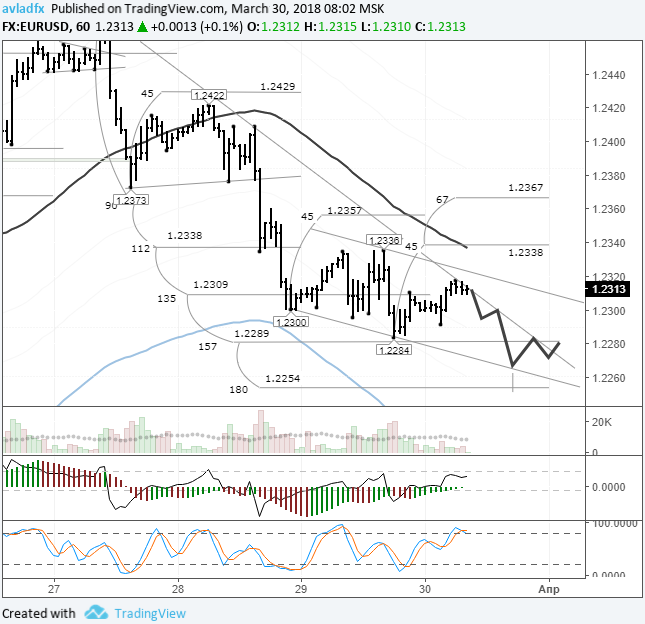Previous:
On Thursday the 29th of March, trading on the EUR/USD pair closed slightly down. The US dollar gained ground against the single currency as traders adjusted their open positions ahead of the long weekend. The rate ended up dropping to 1.2284.
US data:
Day’s news (GMT+3):
Good Friday: Australia, Canada, New Zealand, Switzerland, UK, USA, and Germany.

Fig 1. EURUSD hourly chart. Source: TradingView
A new daily low was reached yesterday just as I expected. The euro dropped to the 157th degree.
At the time of writing, the euro is trading at 1.2313. The price has corrected to the trend line from its low point of 1.2284 and now euro sales are recommencing. For today, I’m predicting a drop to 1.2267. The 17:00 (GMT+3) bar will be important as this is where the hourly cycles indicate an upwards reversal should take place. Markets will be thin today, so we might even be able to reach 1.2254. If the bears don’t make it to their target of 1.2267 by 17:00, I think it highly unlikely that the euro will continue to decline. According to my projections, the growth phase will last until the 4th of April.














Leave A Comment